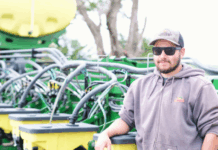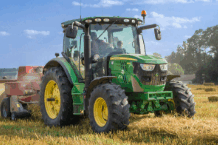Economics has been described as stating the obvious in terms of the incomprehensible. At times, it does seem unnecessarily complicated. When I want to know something about economics, I “high-tail it” to an economist. In this case, Tom Trieman, a natural resource economist and forester with the Missouri Department of Conservation.
Tom recently conducted an economic impact analysis of the Kansas forest and wood industry using an IMPLAN model. In the mid-70s, the USDA Forest Service developed IMPLAN (IMpact analysis for PLANning) for community impact analysis. Economic impact analyses examine the effect of economic activity in a given area – in this case, Kansas. Economic impact is usually measured in terms of changes in economic growth, and associated changes in jobs and income. The analysis estimated the level of economic activity using the most recent available data from 2014, and calculated the difference from what would otherwise be expected if the activity did not occur.
Economic impact analysis is broader than cost-benefit analysis because it considers business relocation and spending multiplier impacts. However, cost-benefit analysis is broader in that it counts non-economic benefits that have a value to people though they do not directly affect the flow of money in the economy. In the case of trees and forests, it includes shade, water quality, and other benefits.
The IMPLAN model Trieman used captured what each forestry or wood-related business needed to purchase from every other business to produce a dollar’s worth of goods or services. Flows of economic activity associated with spending included spending that generated wages for employees who also purchased groceries, utilities, and other products. IMPLAN is able to provide regional multiplier estimates for over 50 business sectors.
IMPLAN estimates that Kansas forest products, wood, lumber, paper, and related industries contributed $2.1 billion to the Kansas economy, in 2016 dollars. These industries support over 9,000 jobs at a payroll of over $490 million, and are responsible for about $169 million in taxes that help to run the state and country. These numbers include logging and sawmill operations, secondary wood products, furniture and cabinet makers, log cabins, and paperboard manufacturing, among others. The grand total includes not only the direct effect of jobs in the industry, but secondary effects or indirect effects, in the economy as a whole. Indirect effects are the changes in sales, income, or employment of businesses supplying goods and services to forest products industry. Another secondary effect is increased sales from household spending from the income earned by forest product and supporting industries. Forest industry employees also spend money they earn on housing, utilities, groceries, and other consumer goods and services.
The numbers above represent the impact of forest products defined to include all primary processors (sawmills) and secondary processors (cabinet makers, etc.) as well as paper products. Using a narrower definition without paper products shows a total impact of $879 million in 2014, supporting about 4,500 jobs. Just considering field and logging operations plus primary mills, the 2014 total impact is estimated at $51.6 million, supporting about 450 jobs at a payroll of about $13 million.
These estimates are based on data collected by the U.S. Bureau of Economic Analysis, the U.S. Bureau of Labor Statistics, and the U.S. Department of Agriculture, and compiled by the Minnesota IMPLAN Group, Missouri Department of Conservation, and the Kansas Forest Service.



